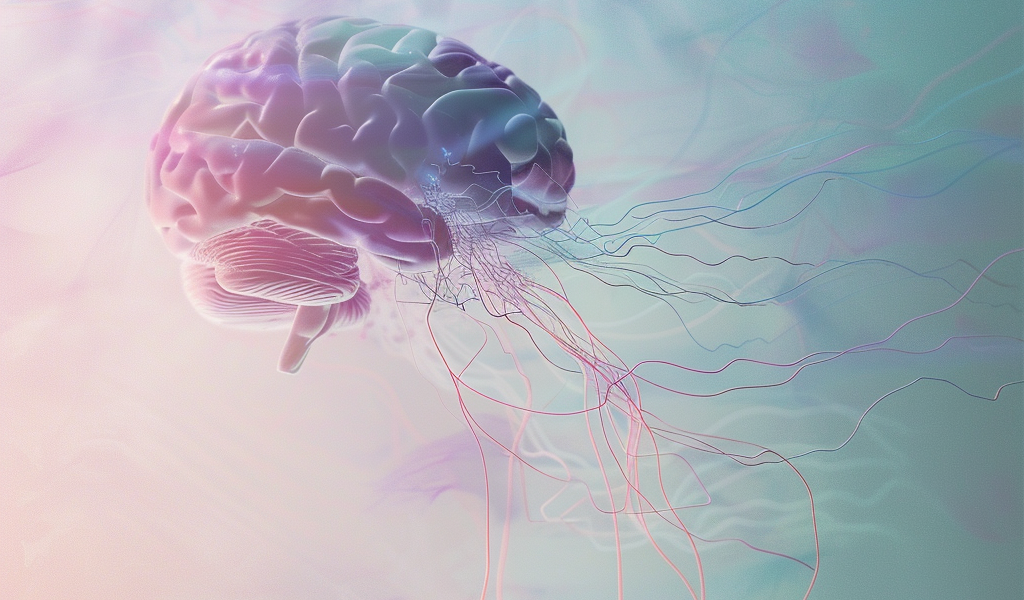Recent research from the University of California, Davis has shed light on the intricate workings of the amygdala, a crucial brain region responsible for processing emotions, particularly fear and anxiety. This groundbreaking study has identified specific cell types within the amygdala that are linked to anxiety, presenting new potential targets for treatment strategies aimed at alleviating anxiety disorders.
The findings, published on October 30 in the American Journal of Psychiatry, highlight the importance of understanding the cellular makeup of the amygdala. Researchers focused on analyzing gene expression patterns in both human and macaque brains, revealing clusters of cells with distinct roles in emotional regulation. Among these, a notable type of cell, termed “gatekeeper” cells, was found to play a significant role in controlling the flow of emotional signals.
“The amygdala is central to emotion processing in the brain and is known to contribute to fear and anxiety,” stated Drew Fox, an associate professor in the UC Davis Department of Psychology and the senior author of the study. This research underscores the critical need to move beyond traditional views that equate the size or structure of the amygdala with emotional disorders. Instead, the focus is shifting towards understanding specific cell types and their functions.
Historically, the size and general structure of the amygdala have been scrutinized for their potential links to conditions like anxiety and depression. However, Fox notes that these physical characteristics do not reliably predict emotional issues. Recent rodent studies have indicated that different subregions of the amygdala contain various cell types, each with unique and sometimes opposing functions. This discovery suggests that emotional disorders may arise from alterations in specific cell types rather than overall changes in the amygdala.
Graduate student Shawn Kamboj spearheaded this collaborative effort between Fox’s research group and Professor Cynthia Schumann’s lab at the UC Davis School of Medicine. Their work aimed to fill a significant knowledge gap regarding the cellular landscape of the primate amygdala, which has remained largely unexplored until now.
The research team employed advanced techniques to categorize the different cell types present in the amygdala. By examining gene expression patterns, the scientists were able to identify unique clusters of cells that exhibit distinct functional roles. This level of detail is crucial for developing targeted therapies that could more effectively address anxiety disorders.
Among the key findings, the study identified FOXP2-expressing cells in the amygdala that serve as “gatekeepers.” These cells play an essential role in regulating how emotional signals are processed and transmitted within the brain. Understanding the mechanisms by which these gatekeeper cells operate could lead to innovative treatment options for individuals suffering from anxiety and related disorders.
The implications of this research extend beyond the amygdala itself. By establishing a clearer understanding of how specific cell types contribute to emotional processing, scientists may be able to translate findings from rodent models to human applications. This could pave the way for new therapeutic strategies that are more precisely tailored to the underlying biological mechanisms of anxiety.
The study emphasizes the importance of cell-specific functions in the brain, particularly in the context of mental health disorders. By focusing on the cellular components of the amygdala, researchers are better positioned to develop interventions that target the root causes of anxiety rather than merely addressing symptoms.
As anxiety disorders continue to affect millions of people worldwide, the need for effective treatments has never been more pressing. The identification of these new amygdala cell types represents a significant step forward in understanding the biological underpinnings of anxiety and could lead to breakthroughs in how these conditions are treated.
This research not only highlights the complexity of the brain’s emotional processing centers but also reinforces the notion that mental health treatment must evolve to incorporate a more nuanced understanding of brain function. The findings from UC Davis are expected to inspire further studies aimed at exploring the relationship between specific cell types in the amygdala and various emotional disorders.
With continued exploration of the cellular dynamics within the amygdala, the future of anxiety treatment may become more targeted and effective, ultimately improving the quality of life for those affected by anxiety disorders.





